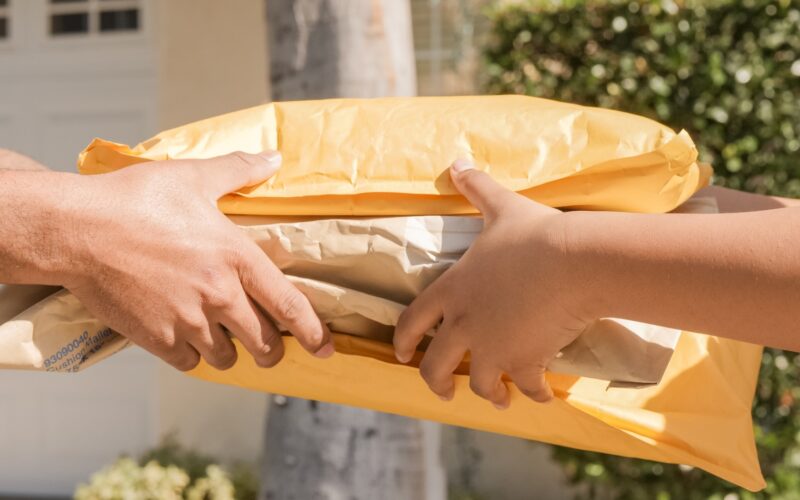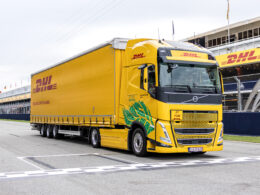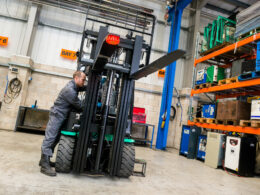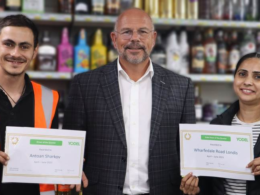Given the rise of DoorDash and similar rapid delivery businesses, it’s easy to gloss over just how difficult on-demand delivery can be.
Picture everything that goes into a typical last mile delivery: checking inventory levels and driver availability, optimising routes, despatching drivers, communicating with customers, tracking delivery progress, capturing proof of delivery, etc. Now picture managing all of that complexity in a matter of minutes, and you’ve got a good handle on what on-demand delivery logistics requires.
In spite of all this complexity, consumer demand for this kind of delivery service continues to rise. As a recent article in The Grocer notes, The UK online grocery market alone is projected to reach higher than £22bn within the next three years, and that’s before we even get into pet food, tyres, medicine, and other items that consumers need in a hurry.
This puts a lot of pressure on retailers and other businesses to offer on-demand delivery services, but for many, doing so will mean seriously powering up their logistics capabilities. Luckily, between advances in AI and machine learning and other improvements in last mile technology, getting local orders fulfilled within minutes is more doable than ever.
What customers expect out of on-demand deliveries
When the Irish rapid grocery delivery firm Shuppa opened their first dark store for order fulfilment, they set out to prove that on-demand delivery for things like groceries “is a customer demand-led trend.” Well, customers in the UK and Ireland have spoken, and they’ve offered pretty clear evidence that they’re going to continue needing orders for things like groceries and other goods fulfilled within minutes.
This puts the onus on delivery organisations to find a way to evolve their delivery networks to ensure the speed, flexibility, and visibility that a thirty-minute (let alone a 15 minute) delivery turnaround requires. Making this happen will be partially a matter of experimenting with things like dark stores and space rentals, but the biggest challenges are likely to come in the last mile.
How can your technology empower rapid delivery turnarounds?
In order to pull off the kind of delivery turnarounds that consumers increasingly demand, your technology has to offer you a few key components:
- Live driver and order data: You need to see orders as soon as they come in and check them against the locations and schedules of each of your drivers instantaneously. Once drivers are carrying out deliveries, you need to be able to track them easily and look out for exceptions.
- Streamlined routing and despatching: If you have to fuss with the output of your routing engine to get an efficient route, you end up wasting valuable minutes.
- AI-powered delivery windows: In on-demand deliveries, showing up at exactly the right time is paramount, which is why you need to be able to predict exactly when the delivery is going to arrive. AI and machine learning can help you get there by analysing past traffic patterns and delivery times.
- Robust customer communication: On-demand deliveries tend to be particularly high-touch for customers, which means you need the ability to easily send updates throughout the process.
- End-to-end functionality: At the end of the day, on-demand deliveries are a complex process, which means you need technology that can help you manage the process holistically, while still enabling you to handle individual delivery exceptions.
Best practices for on-demand deliveries
When you have the right technology, you can lay the groundwork to delight your customers with the rapid delivery turnaround times that they’re increasingly demanding. However, to stay one step ahead of the growing competition, there are some other best practices you can follow to ensure a robust customer experience that backs up your delivery promises.
- Automate wherever possible: speed is often antithetical to manual processes, which is why you want to be able to create delivery routes in a single click, automatically find the right drivers and dispatch orders to them, and track deliveries as they unfold.
- Offer customers real-time tracking: Providing live driver location data is pretty standard for things like food delivery, the real value add comes when you’re offering a live look into deliveries that are actually going according to plan.
- Prioritise data integration: One of the most frustrating experiences as a customer is receiving an order that doesn’t have everything you expected, but frequent stockouts make that a common reality in many instances. The more effectively you can create live data flows between delivery systems and inventory/warehouse management systems, the more effectively you can avoid this fate.
Demand for rapid order fulfilment in areas like grocery retail, pet food, tyres, etc. isn’t going away. For delivery organisations, this can be a huge opportunity to power growth and gain market share. The trick is to approach this complex process with the right mindset and the right technology.
By Alex Buckley, General Manager for EMEA and APAC Operations at DispatchTrack














